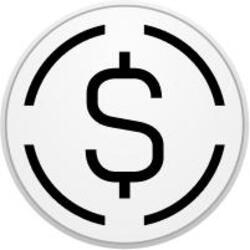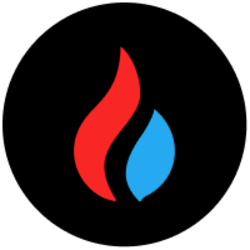Starbucks (SBUX) reports earnings on Tuesday after the close and traders are expecting a larger-than-normal move in the stock. We’ll review the current state of the company and discuss a possible earnings-related options trade that accounts for the current uncertainty. Founded initially as a coffee bean wholesaler in 1971, Starbucks has grown to an impressive 40,199 locations as of the end of its fiscal year in September 2024. Less impressive than the store and revenue growth, however, is the company’s net income growth, which has largely stalled since reaching its peak in 2017. The company has faced some operational challenges in recent years, which have contributed to stagnant net income and free cash flow growth, as well as rising customer dissatisfaction. In September 2024, Brian Niccol, the highly regarded CEO of Chipotle Mexican Grill, who had successfully turned around Taco Bell, was appointed Chairman and CEO of Starbucks. There are several issues critics of the company’s operations suggest he must resolve. Starbucks’ menu has grown complex, which slows down service, overwhelms baristas, and leads to inconsistent product quality. The focus on intricate drinks prioritizes mobile and drive-thru orders, which can be frustrating for in-store customers, particularly those waiting for simpler orders. Mobile orders, promoted as a source of growth and innovation, now account for roughly 30% of U.S. transactions, but the system has created operational bottlenecks. Inaccurate wait times on the app and crowded pickup areas lead to chaotic store experiences, which can alienate both customers and baristas. Former CEO Howard Schultz described stores as “mosh pits” due to surges in mobile orders, which undermined the traditional coffeehouse vibe. Niccol has a clear mandate to reverse Starbucks’ operational and financial decline while restoring its brand identity. His “Back to Starbucks’ strategy is ambitious, attempting both operational and cultural fixes, reducing menu complexity, emphasizing “fewer, better’ products to improve consistency and speed. His strategy also attempts to restore the coffeehouse vibe by reintroducing ceramic mugs, Sharpie-written names on cups, condiment bars, and comfortable seating to encourage in-store lingering. Additionally, it improves mobile ordering by separating pickup areas, limiting customization options, and enhancing app accuracy for wait times. Rising coffee costs The fly in the ointment is that in addition to Starbucks’ operational challenges, it faces another problem: rising expenses. The price of exchange-grade green Arabica beans was $3.08 per pound as of December 31, 2024, 55% higher than the average price for the first half of the year. They rose another 18% in January 2025 alone. While the pace of coffee price increases has slowed, green Arabica prices have risen another 9.2% over the past three months. Wage expense is also rising. The company reported that “in store partner wages and benefits” cost “approximately 140 basis points” of net operating margin in FY2024 vs FY2023, which translates to ~$83 million or ~ 2.15% of net income. The bad news is that, according to the Brookings Institution, service sector wages have failed to keep pace with the sharp inflation the country experienced beginning in April 2021. This suggests that wage pressures may continue. Meanwhile, consumer data indicates that consumers are stretched, which may limit the company’s ability to pass along higher wages and coffee expenses through continued price increases. If falling consumer discretionary spending pressures foot traffic, the company could see margin pressures from increased promotional activity to draw them back. The trade The options market is implying a move of approximately $6.50, or more than 7% higher or lower, by the end of the week, which is well above the long-term historical average of around 4%. Traders or investors who believe in Niccol’s vision, but concerned about some of the expense-side challenges can make a month-long tactical bullish bet using a call-spread risk reversal. Purchasing the May 30th month-ending at-the-money 84 strike calls and selling the 76/92 strangle to finance it. This would offer ~$8 of potential upside, or just under 10% of the current stock price. The downside risk is that one may be compelled to purchase the shares at $76 per share, a 9.3% discount to Friday’s closing price of $83.81. Held to expiration, a similar strategy would have been profitable over 45% of the time over the past 44 reported quarters, it would have lost money 9% of the time. It would have broken even just over 45% of the time with an average profit overall of ~ 2.6% of the stock price as follows. The trade Sell SBUX May 30 $76 put Sell SBUX May 30 $92 call Buy SBUX May 30 $84 call DISCLOSURES: (None) All opinions expressed by the CNBC Pro contributors are solely their opinions and do not reflect the opinions of CNBC, NBC UNIVERSAL, their parent company or affiliates, and may have been previously disseminated by them on television, radio, internet or another medium. THE ABOVE CONTENT IS SUBJECT TO OUR TERMS AND CONDITIONS AND PRIVACY POLICY . THIS CONTENT IS PROVIDED FOR INFORMATIONAL PURPOSES ONLY AND DOES NOT CONSITUTE FINANCIAL, INVESTMENT, TAX OR LEGAL ADVICE OR A RECOMMENDATION TO BUY ANY SECURITY OR OTHER FINANCIAL ASSET. THE CONTENT IS GENERAL IN NATURE AND DOES NOT REFLECT ANY INDIVIDUAL’S UNIQUE PERSONAL CIRCUMSTANCES. THE ABOVE CONTENT MIGHT NOT BE SUITABLE FOR YOUR PARTICULAR CIRCUMSTANCES. BEFORE MAKING ANY FINANCIAL DECISIONS, YOU SHOULD STRONGLY CONSIDER SEEKING ADVICE FROM YOUR OWN FINANCIAL OR INVESTMENT ADVISOR. Click here for the full disclaimer.











































